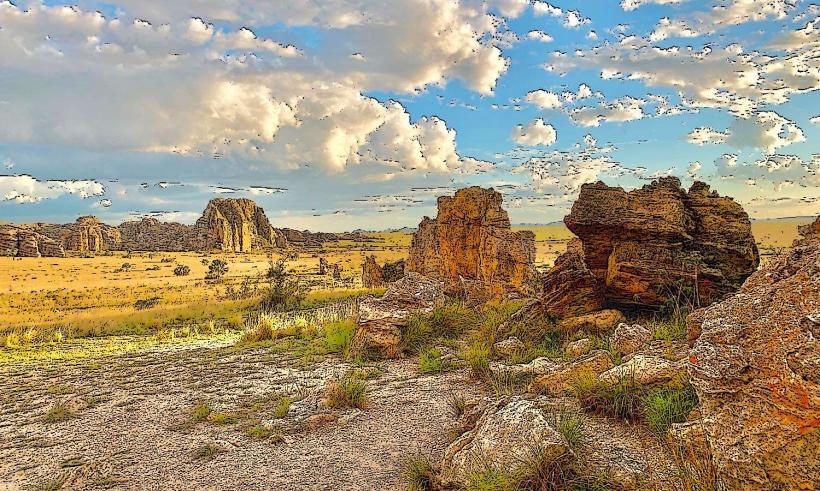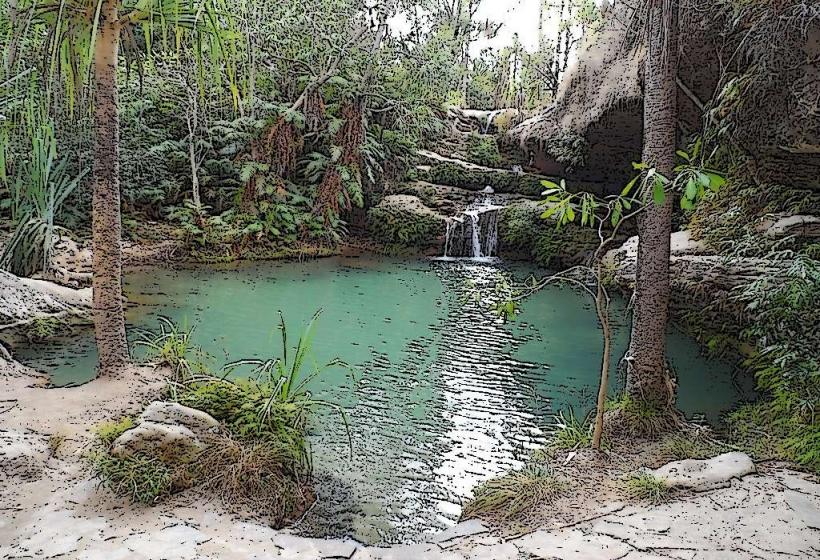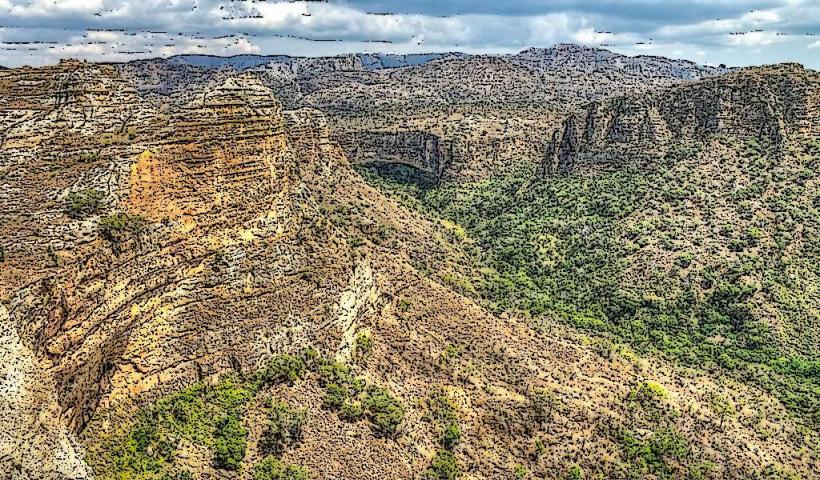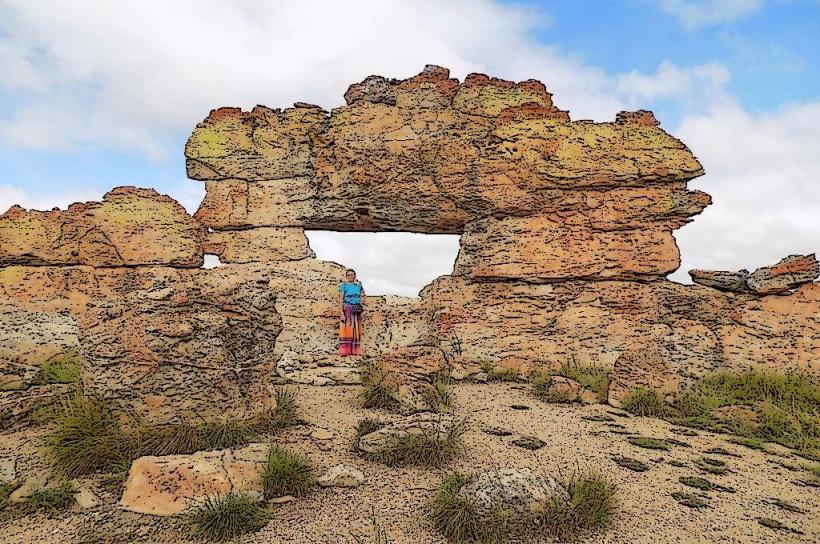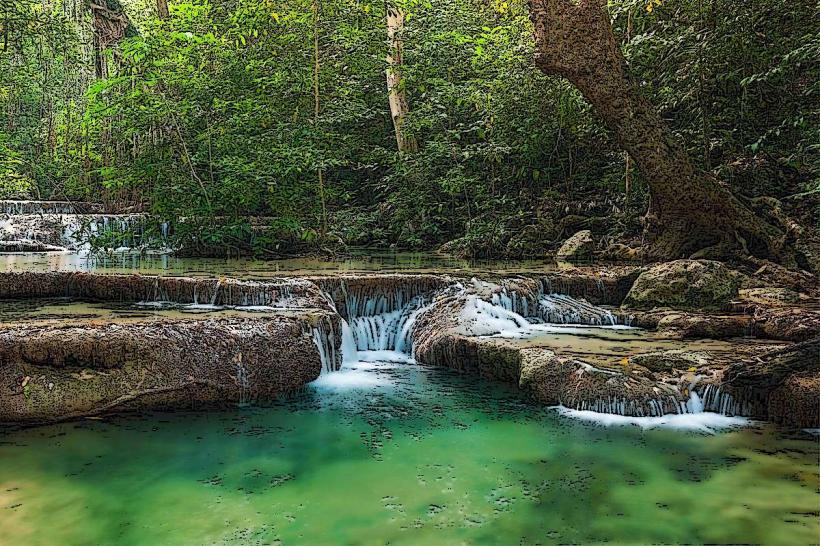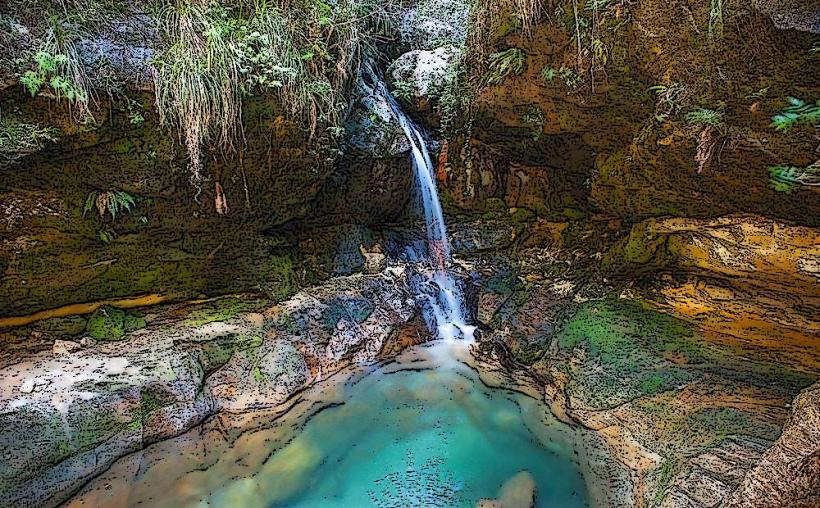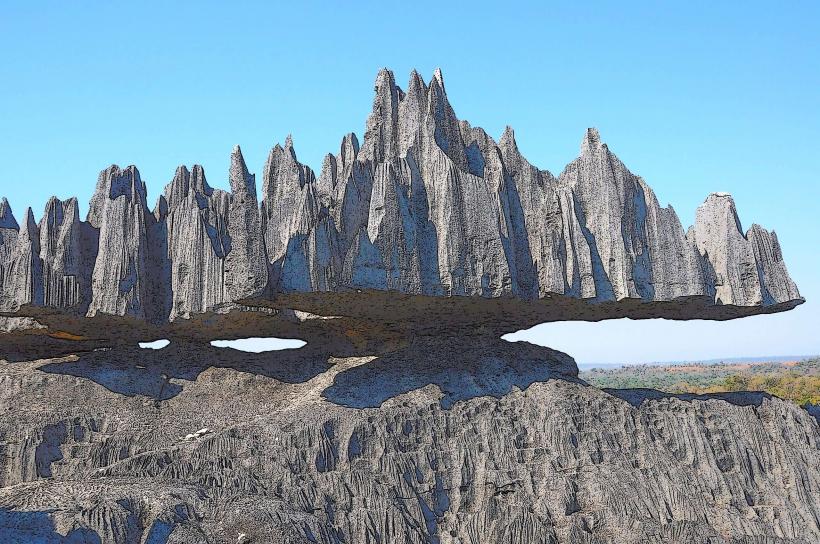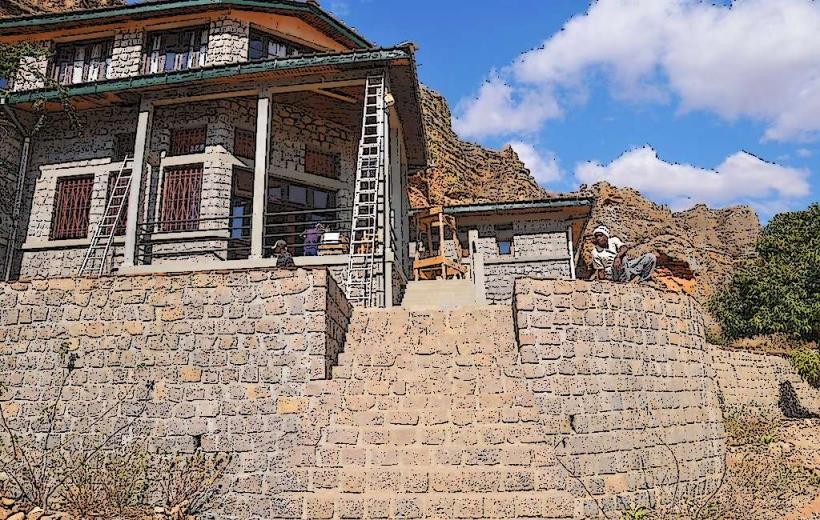Information
Landmark: Isalo Village RanohiraCity: Isalo
Country: Madagascar
Continent: Africa
Isalo Village (often referred to as Ranohira) is a small, rural village located near Isalo National Park in southern Madagascar. It serves as the main gateway for tourists visiting the park, and its location makes it an essential stop for those exploring the natural beauty and cultural heritage of the region.
Key Features of Isalo Village (Ranohira):
Location and Accessibility:
- Isalo Village is situated about 700 kilometers (around 430 miles) south of Antananarivo, Madagascar's capital, and is the closest settlement to Isalo National Park. It lies at the foot of the Isalo massif, the vast sandstone formation that dominates the national park.
- The village is easily accessible by road, making it a convenient starting point for those intending to visit Isalo National Park. The journey to Ranohira from Antananarivo can take 10–12 hours by car, depending on road conditions, or a shorter time if arriving from Tulear (around 200 kilometers away).
Role as a Gateway to Isalo National Park:
- Isalo Village is often the first stop for tourists before they head into Isalo National Park for hiking, trekking, and exploration. Most accommodations, including hotels, guesthouses, and lodges, are located in or around the village. The village is also where you can find tour guides and local services related to park tours.
- Visitors typically arrange their park visits and trekking tours through the village, which offers a variety of guided excursions, including visits to natural attractions like the Canyon of Isalo, Piscine Naturelle, and the Windows of Isalo.
Cultural Significance and Local Community:
- The village is home to the Bara people, an ethnic group native to southern Madagascar. The Bara are primarily known for their cattle herding and agricultural lifestyle. They have deep cultural and historical ties to the region and have lived in the area for centuries.
- The local population maintains traditional practices, including using the surrounding landscape for livestock grazing and utilizing the park's resources. The Bara people's cultural influence is evident in the area's architecture, customs, and local way of life.
- In addition to cattle herding, the Bara people also engage in agriculture, growing crops such as cassava, sweet potatoes, and rice in the fertile areas surrounding the village.
Tourism and Activities:
- Trekking and Guided Tours: Isalo Village acts as a starting point for treks into Isalo National Park, where visitors can explore the park's stunning sandstone landscapes, canyons, and endemic wildlife. Local guides offer trekking tours of varying lengths, often including visits to the Piscine Naturelle (Natural Pool), Canyon of Isalo, and the Windows of Isalo.
- Cultural Experiences: Visitors to Isalo Village can learn about the traditions of the Bara people, including their lifestyle, crafts, and the role of cattle in their culture. Local artisans may sell handmade crafts, and visitors may have the chance to witness local ceremonies or festivals if they coincide with their visit.
- Wildlife Watching: The village and surrounding area offer opportunities for wildlife viewing, especially as part of tours into Isalo National Park. Visitors may encounter lemurs, chameleons, and numerous bird species, especially on guided hikes.
Accommodations and Facilities:
- Isalo Village offers a range of accommodations for visitors, from budget-friendly guesthouses to more luxurious lodges and hotels. Many of the lodgings offer scenic views of the Isalo massif and provide easy access to the park's entrance.
- The village also has a few small shops, restaurants, and markets where visitors can purchase food, water, and basic supplies before heading into the park. There are also local guides available for hire, and transportation services can be arranged for trips to other nearby attractions.
Climate and Best Time to Visit:
- The climate in Isalo Village is semi-arid, with hot and dry conditions for most of the year. Temperatures can be quite high, especially during the summer months (November to March).
- The best time to visit Isalo Village and the surrounding park is during the dry season, from April to October. This period offers cooler temperatures, clear skies, and easier access to hiking trails. The wet season (November to March) can make the trails slippery and difficult to navigate due to rainfall.
Nearby Attractions:
- Tulear (or Toliara): Located to the southwest of Isalo Village, Tulear is a larger coastal city known for its beaches, markets, and access to marine life. Visitors often combine their trip to Isalo with a visit to Tulear.
- Zombitse-Vohibasia National Park: Located to the north of Isalo National Park, this park is home to dry forest ecosystems, rare birds, and endemic species. It’s another great location for wildlife viewing and exploring Madagascar’s unique biodiversity.
Conclusion:
Isalo Village (Ranohira) is a vital stop for those visiting Isalo National Park, offering a blend of natural beauty, cultural richness, and practical services for tourists. The village serves as both a gateway to the park's striking landscapes and a place to immerse in the traditions of the Bara people. Whether you’re there to hike, explore, or simply relax, Isalo Village provides a welcoming environment to experience one of Madagascar’s most unique regions.

